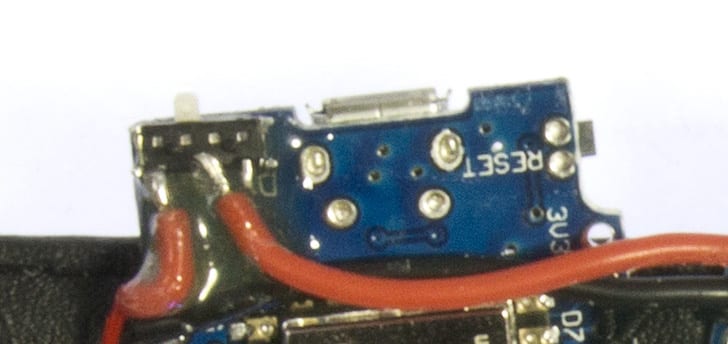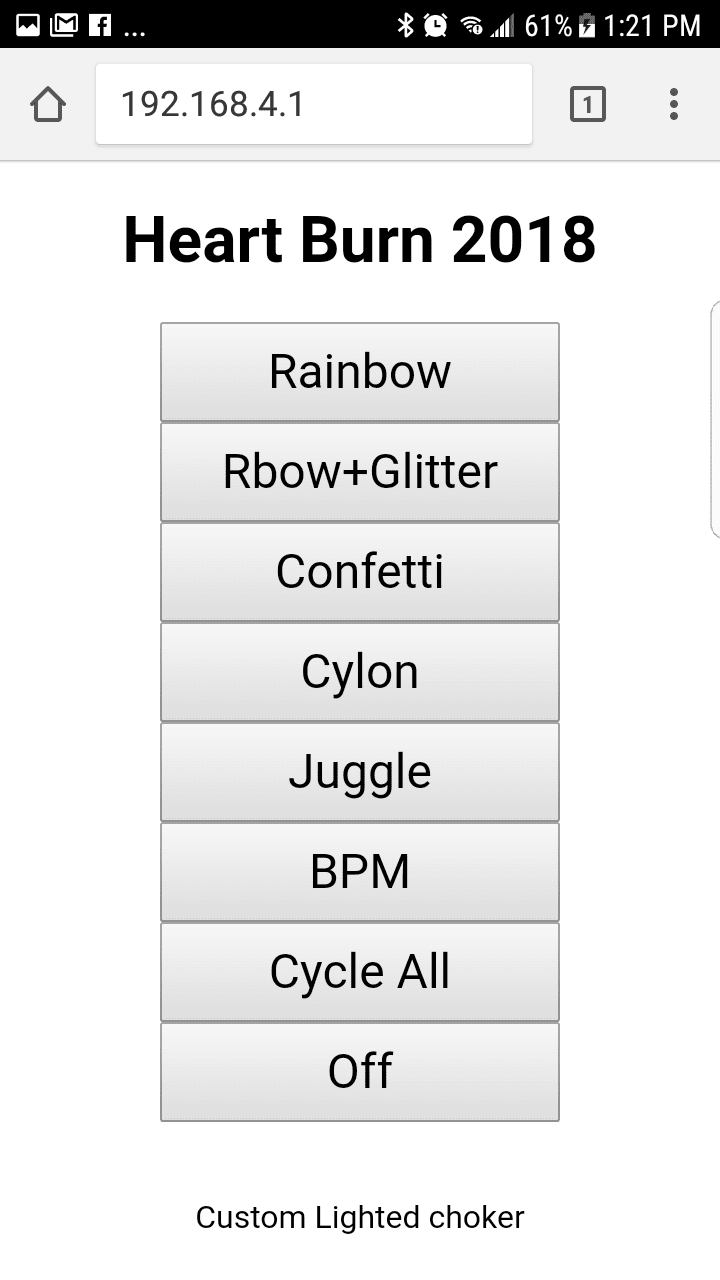Solarbotics has been on "the internets" for quite some time now. We've seen many websites come and go, but we've recently jumped feet-first into the cold, frigid water of this "social web 2.0 happy fun time" thing we keep hearing about. I mean, it's Web 2.0. That's, like, twice as much as Web 1.0. And […]

Project: APA102-2020 MicroNova Custom LE...
I created this choker as a project to demonstrate the new MicroNova APA102-2020 LED strips. 
Photo by Yeti, edited by Batgirl
These addressable LEDs are extremely small, less than 1/4 the size of a standard 5050 LED.
This project was built using engineering sample standard MicroNova 99 LED / meter strips . The MicroNova strips we are selling have 198/meter - twice the density!
Reason for a Choker necklace:
Hats have been done, shoes have been done, pendants have been done.
This is something new for a Valentine’s dance costume, so I decided to go with a choker design. I also wanted something that was interactive, something that would add another layer of WOW to just lighting.
Build:
I used a Wemos D1 Mini development board along with a boost-converting battery shield for the Wemos D1.

The battery shield was a particularly good choice here because the MicroNova LEDs should be supplied a solid 5VDC. This board boosts the battery voltage to 5V, and then the Wemos D1 Mini bucks it down to 3V3 for it's own operation.
A mini SPDT Slide switch toggles the power from the battery shield to the D1. This allows charging the battery using the battery shield USB connector while not powering the D1.

Epoxy locks the switch and wires in place.
The battery used is a conveniently handy older 450mAh Lithium Polymer. Depending on the lighting mode, this battery can power the necklace for a couple of hours.
I used elastic thread to attach the LED strip and components to the necklace. A heavy duty needle was all that was needed to punch through the (imitation) leather belt. Because the thread was elastic and tied under tension, it held the MicroNova strip well in place.
Operation:
 When the choker powers up, it creates a WiFi Access Point called "HeartBurnChoker1".
When the choker powers up, it creates a WiFi Access Point called "HeartBurnChoker1".
 Once I connected to this WiFi, I opened a browser and went to 192.168.4.1. The control interface is simple, but effective. The D1 Mini has more than ample power and speed to effectively drive these LEDs. The MicroNova features separate clock & data lines, so even relatively slow I/O (like Raspberry Pi) can still make it work.
Once I connected to this WiFi, I opened a browser and went to 192.168.4.1. The control interface is simple, but effective. The D1 Mini has more than ample power and speed to effectively drive these LEDs. The MicroNova features separate clock & data lines, so even relatively slow I/O (like Raspberry Pi) can still make it work.


MORE POSTS
Wednesday links are back, with more wednesdayness and linkness. Or linkedness. In any case, after the holidays we got better. More rested, more well-fed, more exercised, more healthy, more balanced, more busy, more relaxed, more organized, more happy... Er, I think these were New Year resolutions... All I mean is that we are finally back […]
Well, it certainly has been a busy week! Particularly for our pals over at SparkFun, who just wrapped up their third annual Free Day. This is quickly becoming a favourite spectator sport around the office, as every year we tune in to watch the available money evaporate and/or their website/servers die a horrible, horrible death. […]
This is a quick note to announce our holiday schedule, which is going to be as follows: December 24 (Christmas Eve)- 9am to 12pm (half day) December 25 (Christmas Day) - offices are closed December 26 (Boxing Day) - offices are closed December 31 (The Day Before New Year's Day) - 9am to 12pm (half […]
Solarbotics, Ltd. is not responsible for misprints or errors on product prices or information. For more information, please see our Terms and Conditions.
Warning: This product contains chemicals known to the State of California to cause cancer and birth defects or other reproductive harm.
Please visit www.P65Warnings.ca.gov for more information. This item was manufactured prior to August 31, 2018.

